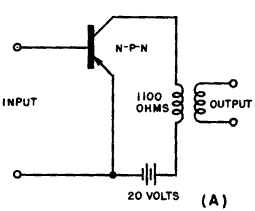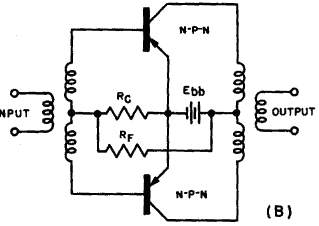| Transistor Basics is a free introductory textbook on transistors and their basic applications. See the editorial for more information.... |

|

Home  Transistor Amplifiers Transistor Amplifiers  Class B Transistor Amplifiers Class B Transistor Amplifiers  Quiescent Point Quiescent Point |
||






|
||
|
Quiescent PointAuthor: Leonard Krugman
Fig. 5-12. (A) Class B circuit (constant voltage). (B) Class B push-pull operation. While the efficiency of a Class A amplifier is good under operating conditions, the collector dissipation is approximately the same whether or not a signal is applied. Its efficiency for intermittent or standby operation is poor.
|
||
Home  Transistor Amplifiers Transistor Amplifiers  Class B Transistor Amplifiers Class B Transistor Amplifiers  Quiescent Point Quiescent Point |
||
Last Update: 2010-11-17



